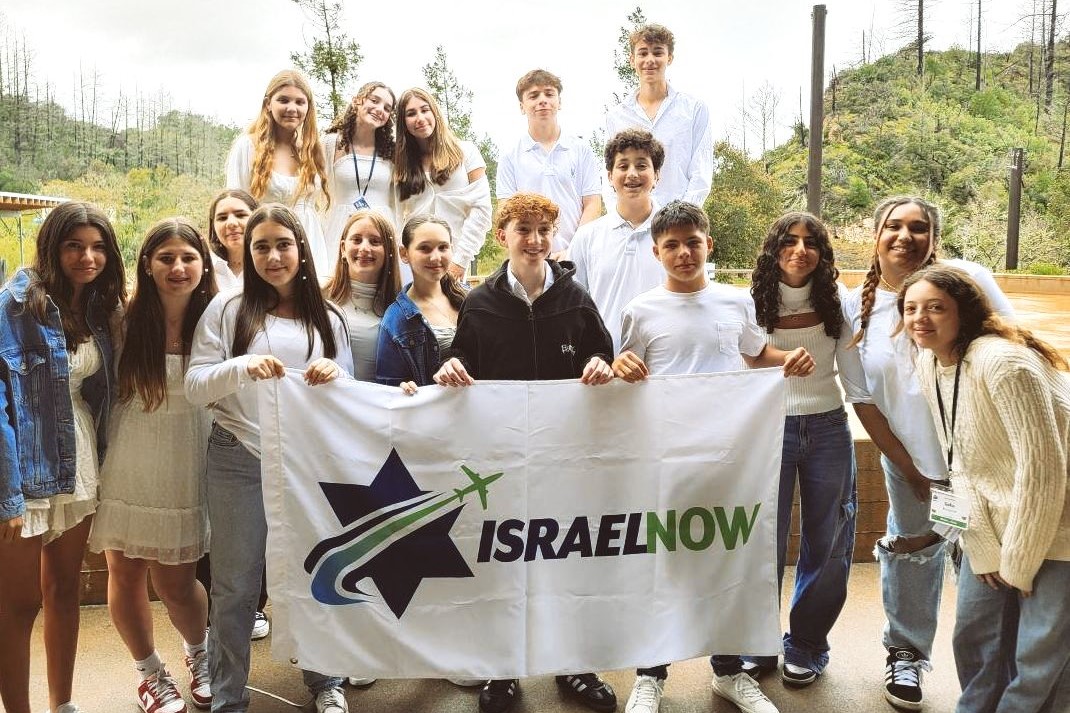Inviting Conversations About Racial Justice Part Three
In the third edition of CAJE’s Inviting Conversations, we are focusing on how you can nurture and raise a generation of children and teens who are more racially literate and empowered to fight racism in the world.
In Mishnah Sanhedrin 4:5, we learn of three powerful concepts central to Jewish values. Our tradition teaches the following:
- Human beings were created as a single entity originally [in Genesis/ Bereisheet Chapter 1 of the Torah] to remind us of the preciousness of each life and that we all come from the same Source, the same beginning.
- No one person is better than another.
- Even though we are all created in G!D’s image, like the first human being, we are all unique beings.
Rabbi Joseph Telushkin in The Book of Jewish Values: A Day-By-Day Guide to Ethical Living(1) explains :
This text is an effective antidote to racism. All people are descended from the same man [sic], so all people are related. There are no
superior and inferior races.
Thus, Jewish tradition emphasizes the point that we are all equal AND we are all unique and different. Note that it does not say that we should all strive to be “colorblind” and try to only see our sameness. We will explore that idea below in more detail.
We invite you to watch this enlightening 12 minute YouTube in which two recent high school graduates, Priya Vulchi and Winona Guo, point out in their TED talk entitled What It Takes to Be Racially Literate:
“In communities around our country, so many of which are racially divided, if you don't go searching for an education about race, for racial literacy, you won't get it. It won't just come to you.”
For Reflection:
- Priya and Winona talk of two major gaps in their education on race-- the heart gap and the mind gap. The heart gap is an inability to understand each person’s disparate experiences in the world and show compassion beyond lip service. The mind gap is an inability to understand the larger, systemic ways in which racism operates. Do you feel there were heart and mind gaps in your education about race? How would you describe it to someone else?
- These young women tell us about their tour around the country talking and listening to people’s personal stories of racism as they experienced it. How do you think talking and listening makes us more racially literate? Whom could you listen to in your life that would tell you about their experience of racism?
For more resources to educate yourself, please click here to read our first publication on Things You Can Do to Promote Racial Justice.
Many well-meaning parents assume that if they educate children to be ‘colorblind,’ they have educated their children to reject racism. In other words, we tell children that race is real, but that it doesn’t matter, when in fact, the opposite is true. Race is not a real, biological category(2), but it does matter because of the way people perceive and act upon their perceptions of color differences.
No one in our society is truly colorblind, because our society and culture educate people to think in terms of “race” and “color.” That is why it is critical to talk explicitly and proactively with our children and teens about race and racism, so you, as a parent, can influence how your children perceive those words, rather than allowing general culture to do it for you.
This 18-minute TedTalk of Anthony Peterson explaining What I Am Learning from My White Grandchildren covers much of what is detailed below and is an eye-opening look into how children perceive race.
Take a look at the chart above, produced by The Children’s Community School in Philadelphia showing the development of attitudes about race as observed in children’s behavior.
Adults often worry that talking about race will encourage racial bias in children, but in fact, the opposite is true. Children respond to race as early as 3 months, and by 5 years old, they already have assumptions and attitudes about race.
Studies have indicated that when adults avoid discussions about race, children receive messages about it that are inaccurate at best and damaging at worst(3). As Anthony Peterson notes in the TedTalk above, “When we speak about race, we don’t burden children; we free them.” Not talking intentionally with children and teens at home and at school about race and racism robs them of the opportunity to learn the awareness and skills necessary to understand and confront racism when they are older(4).
Being ‘colorblind’ blindsides children because it reinforces being blind to the realities of the world. In an ideal world, of course, skin color should not affect how we experience life, but we don’t yet live in an ideal world. So we need to teach two simultaneous messages:
- Ideally skin color shouldn’t matter in relating to or observing someone. On a biological level we share 99.9% of genetic material and on a spiritual level, we all come from the same ancestor.
- However, today in our less-than-ideal world, racial biases are real and expressed in various ways in our society. This is the time to start teaching about the beauty of human diversity-- how to recognize, respect and celebrate each other’s differences.
First, we certainly encourage you to tell your child not to be racist, make racially insensitive remarks or treat people negatively based on the color of their skin. But if that was enough, most of us would not harbor any biases; yet, we often do.
Second, telling your child not to be racist is coming from a negative stance- what not to do. [W]hen children only know what not to do or not to talk about, they don’t have the lenses to understand racial dynamics in their lives, nor the skills to address them(5). We should instead be teaching what they should be doing-- be curious and learn about the diverse ways people experience life. We need to educate them to be upstanders, i.e., anti-Racist, not just neutral.
Third, most people learn best when an idea is concretized with specific examples, particularly if they relate to their life. As you go through your day, give children examples of how racism exists in the world:
- If you get pulled over by a police officer, you could explain that when African-Americans are pulled over, they often experience more fear and are careful not to make any sudden moves. They must have all paperwork laid out on the dashboard because if not, they might be perceived as dangerous and the situation could escalate quickly.
- If your child puts his/her hands in their pockets in a supermarket, you could note that if they were black, they might be suspected of shoplifting, even as a young child.
Though you may feel that you do not have enough knowledge about race and racism, you can offer children a safe space in which they can express their thoughts, fears, anxieties and questions. As we listen non-judgmentally and sensitively, this safe space can become a sacred partnership in which our children know they can come to us to talk about the myriad of complex issues they may be experiencing or witnessing in their lives.
However, if you want to learn more in order to feel more comfortable, click here to access the Resource List on Racial Justice compiled by The Greater Miami Jewish Federation’s Jewish Community Relations Council (JCRC).
- How comfortable am I talking about race and racism in general?
- What is my experience of racism or talking with people about race?
- What would help me feel more confident about exploring the issues of race and racism?
After this exercise, if you are still feeling like you need more information to engage in a thoughtful and meaningful conversation with your child/teen, we suggest a few resources to help educate yourself.
- Read the book: Why Are All the Black Kids Sitting Together in The Cafeteria and Other Conversations About Race by Beverly Daniel Tatum.
- Listen to the experience of Jews of Color in our own communities: Explore the Be’chol Lashon website to hear voices from Jews of Color from around the world.
- Be Proactive. Start by asking your child, no matter the age, what he or she knows about race and racism and about the protests happening around the country.
- Actively listen. Listening intently is a full body action and requires engagement with all of one’s senses. Look at your child. Ensure your body language is open and expresses your willingness to hear. Focus entirely on your child, and listen in a neutral and non-judgmental way that allows them to explore their own thoughts and feelings. Active listening takes time; it cannot be rushed.
- Respond to What They Are Expressing and to What They Aren’t. Only after you hear the full message can you determine the underlying questions or feelings your child really has. This is the baseline and the starting point of the conversation.
- Be Honest. Remember in these conversations, the best responses for your children are honest ones. It’s okay to say “I don’t know,” “I’m struggling with the same thing,” or “Let’s learn about this together.” From this response, they will understand that race is a complex issue and that we all can grow in our understanding at every stage of our lives.
Sometimes the best way to continue a conversation on a difficult topic like racism is by making the topic or theme part of the activities that you normally engage in or are a part of your routine.
Read Together: A good book can model the language to use in future conversations.
- Choose books that have diverse characters and books in which people of color are the protagonists. Check out PJ Library' s book list.
- While reading the book, stop and ask questions like “What do you see?” or “How do you feel about that?”
Watch Movies Together: Find films that offer insights into issues of race, identity and standing up for justice.
- For instance, the 2019 animated film The Addams Family is set in the town of ‘Assimilation’ and we see what happens when people who are different move into the neighborhood. Then follow up after the movie with sharing questions, thoughts and feelings.
View TV Shows Together: Look closely at the characters in the shows that your child or teen watches and ask what messages they send concerning race, gender and roles.
- Express your disapproval of stereotypes and be sure to give your reasons (it doesn’t reflect the uniqueness of each person and the diversity within supposedly similar groups).
- For more suggestions on talking with children about racial stereotypes, check out the complete list on Media Smarts Tip Sheet.
It is critical that we talk with our children about race, racism and how it has affected the lives of people of color. We must start the conversations when our children are in early childhood education programs and continue them throughout their teen years.
As Rabbi Tarfon taught in Pirkei Avot /Ethics of Our Ancestors 2:16:
It is not your duty to finish the work,
but neither are you at liberty to neglect it.
In the mid-twentieth century, Eleanor Roosevelt wrote:
“Where, after all, do universal human rights begin? In small places, close to home — so close and so small that they cannot be seen on any maps of the world… Unless these rights have meaning there, they have little meaning anywhere. Without concerted citizen action to uphold them close to home, we shall look in vain for progress in the larger world(6).”
The work begins at home. And what better time to begin than now.
To close, here’s an inspiring message from Michael Woodward, a local children’s author:
1- Rabbi Joseph Telushkin, The Book of Jewish Values: A Day-By-Day Guide to Ethical Living, p. 316.
2- See https://harvardmagazine.com/2008/05/race-in-a-genetic-world-html and many other scientific publications. In this article, Dr. Spencer Wells, who heads the joint National Geographic Society-IBM nonprofit Genographic Project, notes: “Racism is not only socially divisive, but also scientifically incorrect. We are all descendants of people who lived in Africa recently,” he says. “We are all Africans under the skin.” The kinds of differences that people notice, such as skin pigmentation, limb length, or other adaptations are “basically surface features that have been selected for in the environment. When you peer beneath the surface at the underlying level of genetic variation, we are all much more similar than we appear to be. There are no clear, sharp delineations.”
4- From the article, What White Children Need to Know About Race, by Ali Michael and Elenora Bartoli [embed link in the title above] https://www.nais.org/magazine/independent-school/summer-2014/what-white-children-need-to-know-about-race/
5- Ibid.
6- Excerpt from a speech by Eleanor Roosevelt at the presentation of “In Your Hands: A Guide for Community Action for the Tenth Anniversary of the Universal Declaration of Human Rights.” Thursday, March 27, 1958. United Nations, New York.
CLICK HERE for Part 1: Things You Can Do to Promote Racial Justice
CLICK HERE for Part 2: Text Study Related to Racial Justice




